
About Track Cycling
Track cycling is the most enthralling cycling event of the Olympics. The focus is on the speed, endurance and agility of the riders. The race is organised on a specially designed track called a Velodrome.
This sport was introduced in the first Olympics games of 1896 in Athens and has been a part of the Olympics ever since with the only exception being the 1912 Olympics. Women’s track cycling got introduced in the 1988 Seoul Olympic Games.
Team and individual races are organised for track cycling. The team event requires more than one rider, and the individual race includes the participation of one rider.
It is the most popular cycling sport as it involves high-speed bicycle racing with speeds exceeding way above 60 km/hr. The riders race amongst each other in track cycles around a specially designed track.
Union Cycliste Internationale (UCI) is the governing body of this sport. They formulate rules and maintain the specifications of the bicycles and organise this sport at different sporting arena based on their sporting calendar.
Track Cycling Olympic 2020 logo : ![]()
History
Track cycling is the oldest event in the modern Olympics that started in 1896. The enormous popularity of this sport is associated due to the speed and endurance of the riders.
The riders race on a specially designed track known as Velodrome. They are an indoor stadium on an artificial track with adequate banking for speed riding.
Initially, the length of the track in a Velodrome was about 500 m. In 1960 the track rules were modified to make the length of the track 333 m. Later in 1990, the track rules were further updated to make it 250 m. All the modern tracks of Velodrome are 250 m in length.
Union Cycliste Internationale (UCI) is the governing body of this sport. They formulate rules and maintain the specifications of the bicycles and organise this sport at different sporting arena based on their sporting calendar.
Objective
The objective of all the events of track cycling is to defeat other riders and cross the finish line first. Some events are decided based on points. The riders attaining the most number of points win the race.
The race distance for men and women varies for each event. The men’s events cover a longer distance. Apart from the race distance, the rules governing the events are similar for both men and women.
Events In Track Cycling
The Velodrome
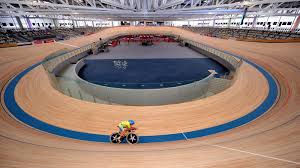 A velodrome is an indoor sporting arena hosting track cycling events. The racing track section is constructed of finely polished pine wood. The length of the cycling track is 250 m.
A velodrome is an indoor sporting arena hosting track cycling events. The racing track section is constructed of finely polished pine wood. The length of the cycling track is 250 m.
The track is banked, providing extra support for speed riders. The riders riding up the bank requires more energy while the rider sloping down the bank accelerates faster.
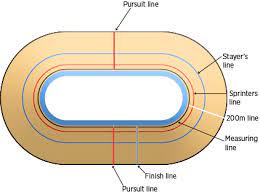
The track starts with a blue band, also known as côte d’Azur. They occupy 10% of the track and not technically a part of the racing track. Riders can ride through the blue band section but overtaking another rider by riding through the blue band leads to disqualification.
About 20 cm from the blue band is the black line that is 5 cm in width. The length of this line is considered as the length of the track. Riders remain glued to this track as it measures the smallest length of the racing track at 250 m.
90 cm above the black line is the red line that is 5 cm in width. The zone between the red and the black line is called the sprinter zone as the rider race through this zone.
Any rider trying to overtake the rider in front of him should do it beyond the red line and can jump back to the zone between the black and red line after overtaking.
About 2.5 m beyond the red line is the blue line that is 5 cm in width. This line is also known as the stayer’s line. This line plays a significant role in Madison where the resting rider stays beyond the line.
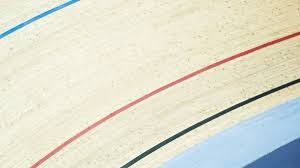
In a sprint or other events, the rider can use the entire part of the track to race. However, the farther the rider from the black line, the more distance the rider has to cover.
A finish line is a black line on a wide, white band going across the home stretch to mark the finish of the race.
- In the team sprint event, two teams start from opposite halves.
- Men’s event comprises three riders of the same nation covering a distance of 750m of the track or 3 laps.
- Women’s event comprises of two riders of the same nation covering a distance of 500m of the track or 2 laps.
- For men, the first rider sets the pace for the race, with other riders following the lead rider in his slipstream. After the first lap, the first rider rides away, and the team is left with two riders now. The second rider rides away after the second lap, leaving only one rider of the team to complete the race.
- For women, the first rider sets the pace for the race, with the other rider following the lead rider in his slipstream. After the first lap, the first rider rides away, leaving only one rider of the team to complete the race.
- The final rider sprint alone for the last lap and the rider with the fastest time wins the race.
- The team winning two races out of three wins the race and goes to the next round.
- The same procedure gets followed until the medal places are decided, including the battle for third and fourth places.
- In the team pursuit event, two teams start from opposite halves.
- A team pursuit involves four riders from the same nation for both men and women, covering a distance of 4 km or 16 laps.
- At least three should cross the finish line. The team that overlaps another team or record the fastest time is considered the winner.
- For time calculation, the front wheel of the third rider of the team crossing the line is considered as the time for the team.
- The team that wins the race goes to the next round, and the procedure gets followed until the medal places are decided, including the battle for third and fourth places.
- Two riders start from the same starting line. The distance of the race is 750m or 3 laps of the race.
- The time to complete the race does not matter; rather the rider riding across the finish line first wins the race.
- The riders use different tactics to slow the race pushing the opponent to an unfavourable position. They allow the opponent to go first so that their slipstream can be used by the opponent before making the final dash for the finish line.
- This race is a combination of tactics, agility and strength of the rider and usually begins slowly before speeding up.
- Each rider winning two races out of three wins the race against the opponent.
- The rider winning the race goes to the next round and the procedure gets repeated until the final medals are decided.
- The sprint repechage allows riders who had lost to a worthy competitor are not to be unduly penalized, by the luck of his draw and have an opportunity to fight for at least third place.
- Repechage allows riders to prove their credibility in sprint and can move to the bronze position depending upon winning the race against other opponents.
- This event was only for men until the 2016 Rio Olympics. Women Madison is introduced, in the 2020 Tokyo Olympics for the first time.
- This is a team event, each team comprising of two riders.
- The race distance for this event is 50 km or 200 laps for men and 30 km or 120 laps for women.
- All the riders start from a single line, and only one rider races at any given point. The other rider just strolls beyond the blue line, also called the resting line.
- The racing rider has to catch the resting rider and push by holding his hand, now the previously resting rider becomes the race rider, and the race rider strolls beyond the resting blue line.
- The team gets disqualified if the riders do not touch each other. Something similar to a relay race in athletics, here instead of passing the baton, the riders need to catch hold of his partner and push him to continue the race.
- This process continues until the race distance gets completed. The team winning the maximum points after the race is declared the winner.
Points Calculation in Madison
- Teams sprint after every 10 laps signalled by a bell. The first team crossing the pursuit line gets 5 points, the second team gets 3 points, the third team gets 2 points, and the fourth team gets 1 point.
- The points awarded are doubled, for the last and penultimate sprint. The first team gets 10 points, the second team gets 6 points, the third team gets 4 points, and the fourth team gets 2 points.
- If a team laps the field, the team gets an additional 20 points. The team scoring maximum points wins the race.
- This event started in 1948 in Japan as a game for betting purpose. It soon gained popularity and became a part of Olympics events in the year 2000.
- Six riders start as a bunch, and they follow a motorcycle known as a Derny.
- The riders jostle for position and follow the slipstream of the Derny. The rider should not cross Derny at any point in time.
- The race distance is 2 km or 8 laps. The Derny gradually increases the speed with each lap to about 45 Km/Hr for women and 50 Km/Hr for men.
- The Derny leaves the track after building up speed after 5 and a half laps. The remaining 2 and a half lap are left to the riders to race out for the finish line.
- The top riders then move to the next round until the last bunch of six rider’s remains. The top three riders in the penultimate race are awarded medals.
- This event involves tactics and positioning. The rider just behind the Derny can ride through the slipstream and accelerate after the Derny leaves the field.
- Once the riders place themselves behind the Derny, they have to stick to their positions, and overtaking is not allowed until the Derny leaves the field.
- The riders should be alert, agile, tactical and extremely fast to win the race.
- This event is a sort of combination of events similar to a decathlon in athletics.
- The riders are awarded points after completion of every event and the rider acquiring the most points is declared as the winner.
- This event consists of six different races: Scratch Race, Individual Pursuit, Individual Time Trial, Flying Lap, Elimination Race, Points Race
- One rider from each nation participates in this race and comprises 18 riders for men and women.
- In the Scratch Race, all the riders start from a common line. The race distance is 15 Km for men and 10 Km for women. The rider crossing the line first is the winner and awarded the highest points.
- In Individual Pursuit, the two riders from two different nations race against each other. The race distance is 4 Km for men or 16 laps and 3 Km for women or 12 laps. The riders start at the opposite pursuit line, and the rider recording the fastest time wins the race and accordingly acquires points.
- In an Individual Time Trial, the race distance is 1 Km or 4 laps for men and half Km or 2 laps for women. The rider recording the fastest time is awarded points based on the standings.
- In a Flying Lap, the rider builds up speed during the single lap, and only the time for completion of the last 200 m gets considered for the time.
- In the Elimination Race, for a group of 18 riders, the race distance is 36 laps. The riders sprint after the end of every two laps. The last two riders get eliminated from the sprint, and the process continues until only two riders are remaining. The rider crossing the finish line first acquires the maximum points.
- In the Points Race, the race distance is 40 km or 160 laps for men and 25Km or 100 laps for women. After every 10 laps, riders sprint to cross the finish line, with points awarded to riders. It is the final event of the Omnium.
Points Calculation in Madison
- Riders sprint after every 10 laps signalled by a bell. The first rider gets 5 points, the second rider acquires 3 points, the third rider gets 2 points, and the fourth rider gets 1 point.
- The points awarded are doubled for the last and penultimate sprint. The first rider acquires 10 points, the second rider gets 6 points, the third rider gets 4 points, and the fourth rider gets 2 points.
- If a rider laps the field, an additional 20 point, is awarded to the rider. The rider scoring maximum points wins the race.
- The total points earned by the riders decide the winner.
Equipments
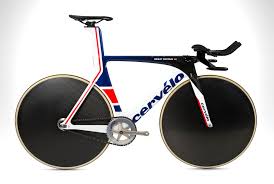
Track cycles have only one drive and one chaining without any gears. These cycles do not have brakes. Tubular tyres are used for track cycling.
The frames of the cycles are made from carbon fibre or titanium to lower the weight of the cycle. They have shorter chainstays with a higher bottom bracket so that the pedals do not touch the tarmac when riding on a banked surface.
They are fitted with drop handlebars to provide riders with an aerodynamic seating position. The rim of the tyres can have spokes casting or constructed from a single cast. The minimum mass of the cycle should not be below 6.8 kg.
The saddles of these cycles are higher and positioned according to the rider to provide the best aerodynamic advantage to the rider.
Safety Equipments
Track cycling is a fast sport. Safety of riders are of paramount importance in this sport.
Crash Helmets: Wearing helmets is a mandatory requirement for a rider. Helmets should be worn by the rider at all times during riding, whether during competition warm-ups or practice. The helmets for track cycling are aerodynamically designed with back elongation to provide minimal resistance to the rider during their pursuit.
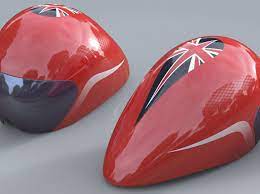
Clothing: The rider should not wear loose clothing that could be tangled, in the rider cycle. They should wear comfortable clothing that should not display any offensive message or image that spoils the spirit of the game. All the team members should wear similar visibly identifying jerseys.
Visual Identification: The riders should always wear the visual identification sign provided by the organiser.
Gloves: Wearing gloves is a mandatory requirement for a rider. This is required to protect their hands against falling across the rough terrain of mountains. They also help riders to maintain a firm grip on their handles.
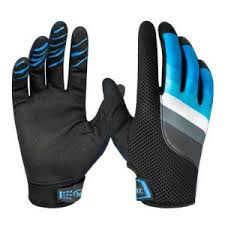
Shoes: Riders should wear proper racing shoes at all times during riding, whether during competition warm-ups or practice.
Goggles: Track cycling is a fast track event. Riders protect their eyes by wearing protective goggles to prevent any object entering their eyes. Wearing goggles is not mandatory, though UCI recommends wearing protective eyewear.
Sports Officials
The following officials keep a strict eye on the performance of the participants.
Technical Delegate: A technical delegate is appointed by UCI, with the responsibility to supervise the preparation of the event covering technical aspects. The role includes carrying out an inspection of the entire track and ascertaining that the recommendations made by him get implemented.
Commissaire: The Commissaire is the official responsible for controlling the sporting aspect of the competition. They are appointed by UCI.
Common Rules Of Track Cycling
- The riders must be registered by UCI. They should be dressed in the racing gear.
- Men and women riders should be aged 23 years or above to be able to participate in the elite category in Olympics.
- The riding number provided by the organiser must be clearly displayed by the rider during riding.
- A rider should hand over their identification number if they retire at any stage during the event.
- The starting positions of the riders are determined by drawing lots. The riders are placed side by side in that order on the pursuit line, the sprinters’ lane being left free. The riders shall be held, but not pushed, by assistants.
- Riders crossing the pursuit finish line must cross the line on the track. The riders crossing on the blue band, also known as côte d'Azur gets disqualified.
- Riders jumping the start signal may be disqualified depending upon UCI guidelines.
- The race may be re-started in case of any mishap within the first half lap. Any mishap, after the first half lap, is not considered for consideration.
- Teams and individual riders are grouped according to the time trials by the UCI.
- Pushing between team members or different riders are forbidden, though in Madison a team rider can catch the hand of his teammate and push them along.
- A rider cannot be overlapped from inside if the rider is riding along the black line. The rider can only be overlapped from outside beyond the red line.
- Inappropriate behaviour towards marshals or race organisers could lead to disqualification of the rider.
Team Sprint
- Mens Team Sprint World Rankings
- France
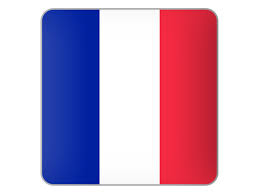
- Russia

- Germany

- Womens Team Sprint World Rankings
- Russia

- Poland

- Ukraine

Team Pursuit
- Mens Team Pursuit World Rankings
- Italy

- Switzerland

- Germany

- Womens Team Pursuit World Rankings
- Germany

- Italy

- Great Britain

Sprint
- Mens Sprint World Rankings
- Sam Webster

- Mateusz Rudyk

- Chavarro Quintero

- Womens Sprint World Rankings
- Wai Sze Lee

- Anatasiia Voinova

- Kelsey Mitchell

Madison
- Mens Team Madison World Rankings
- Netherland

- Italy

- Switzerland

- Womens Team Madison World Rankings
- Italy

- Great Britain

- Germany

Keirin
- Mens Keirin World Rankings
- Chavarro Quintero

- Yuta Wakimoto

- Mohd Azizulhasni Awang

- Womens Keirin World Rankings
- Martha Bayona Pineda

- Helena Casas Roige

- Stephaine Morton

Omnium
- Mens Omnium World Rankings
- Daniel Staniszewski

- Jan Willem Van Schip

- Gavin hoover

- Womens Omnium World Rankings
- Jennifer Valente

- Maria Maertins

- Yumi Kajihara





 (2 votes, average: 5.00 out of 5)
(2 votes, average: 5.00 out of 5)


